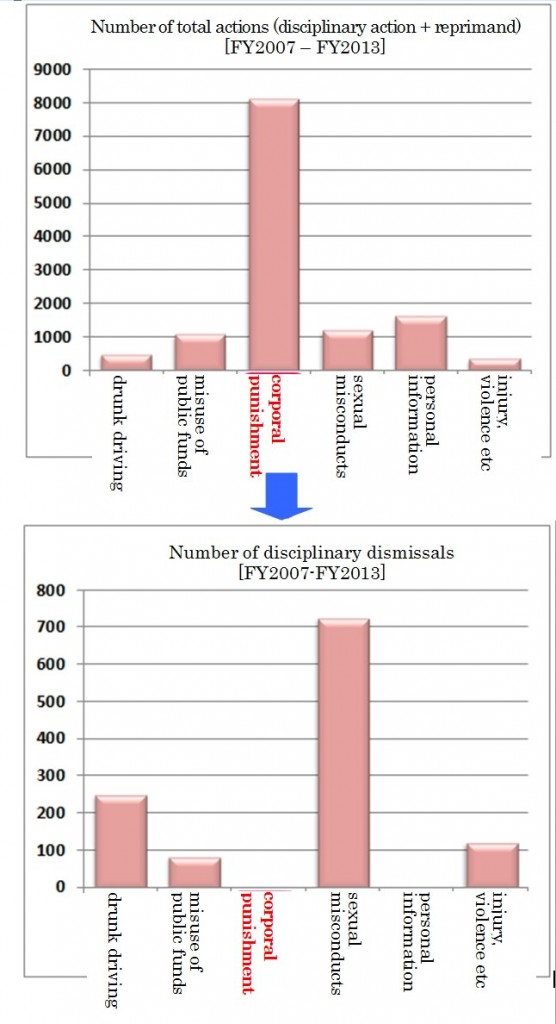Generous penalty against “corporal punishment”; no dismissal – Don’t be content with high number of disciplinary actions
We must not be satisfied with higher number of disciplinary actions
The Ministry of Education announced, on January 30, 2015, the disciplinary actions against teachers in Japanese public schools for FY2013. The media focused on the decisions taken for “corporal punishment”, describing them with the headlines of “record high number”, “major increase” and “4000 were punished”.
While the headlines seems to offer a sense of crisis, the discussions in most articles were balanced. The number of actions against corporal punishments for FY2015 were 3953, about 1700 more than 2253 of the previous year. However, the reports said that “The local governments expanded the investigation of cases and enhanced the severity of disciplinary actions against corporal punishments.” (The Mainichi), “The perception of corporal punishment has changed, resulting in better understanding of injuries in school.” (NHK) The point made by the media was that the number of disciplinary actions increased not because the number of violent teachers grew, but because the government and schools were more critical of physical punishments.
Are the penalties severer against corporal punishment?
One element has not been reported by the media; the heaviness of the penalty. In FY2013, of the 68 cases of drunk driving, 38 teachers were disciplinary dismissed from their post, the toughest decision in disciplinary actions. Sexual misconducts were treated more severely; of the 205 cases, 117, about 60%, were dismissed.
However, with respect to 3953 teachers charged for corporal punishment, disciplinary dismissal was zero. The students’ injuries included 24 cases of ruptured eardrum and 31 cases of bone fracture and sprain. There is a sharp contrast compared to the decision of dismissal against 60% of sexual misconduct cases.
Greater numbers of corporal punishments are discovered, but the penalties imposed are very lenient. The media coverage seems to tell us that stronger disciplinary actions are imposed on corporal punishments. But that is not happening.
The education circles are tolerant of corporal punishment

The generous treatment of corporal punishment was not limited to 2013.
Disciplinary actions since FY2007, the first year the website data was provided by the Ministry of Education, show that corporal punishments were investigated in a much higher number of cases compared to other charges. However dismissal was close to zero. (a total of three since 2007)
Violent actions, such as beatings, by the instructor in school club activities have been described as “educational engagement”. (“Of teachers engaged in corporate punishment only 0.08% were dismissed”)
We must face the issue that the educational community is permissive of corporal punishment by teachers.
Note: “Injury, violence etc.” indicates cases where teachers harm people outside of school hours. When a teacher injures a child of school, “corporal punishment” will be used.
31.01.2015
http://bylines.news.yahoo.co.jp/ryouchida/20150131-00042691/









